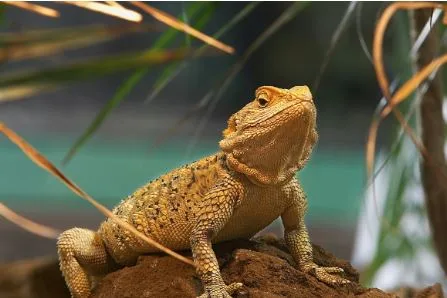What to Know Before Searching Bearded Dragons for Sale
Bringing a bearded dragon into your life can be an exciting and rewarding experience, especially for reptile lovers or first-time lizard owners. But before you start typing bearded dragon for sale into your search bar, there are a few important things you should know. These gentle reptiles may look like prehistoric pets, but they require specific care, attention, and long-term commitment. Whether you’re eyeing a vibrant red morph or considering a more exotic black bearded dragon for sale, it’s crucial to educate yourself before making any decisions.
Understanding the Bearded Dragon’s Nature
Bearded dragons are known for their calm demeanor and curious personalities. Native to the arid landscapes of Australia, they are desert dwellers by nature and thrive in warm, dry environments. These lizards are generally social (for a reptile), tolerate handling well, and often recognize their owners.
But here’s the catch: just because they seem easygoing doesn’t mean they’re low-maintenance. Bearded dragons require the right lighting, diet, and habitat conditions to stay healthy.
Do Your Homework Before You Buy
Before you begin seriously searching for bearded dragons for sale, take time to learn about the different types, colors, and morphs available. Not all beardies are the same, and some may need more advanced care than others. For example, morphs with unique colors or patterns can be more sensitive or prone to health issues due to inbreeding.
Also, check your local laws. While they’re legal in most places, it’s always wise to double-check whether owning a bearded dragon is permitted in your state or city.
What to Look for in a Seller
Whether you’re browsing online listings or visiting reptile expos, finding a reputable seller is key. Avoid buying from random classifieds or someone who can’t answer basic care questions. Instead, look for experienced breeders or exotic pet shops that specialize in reptiles.
When you see a bearded dragon for sale, consider asking these questions:
- How old is the dragon?
- What is it currently eating?
- Has it been handled regularly?
- Are there any health concerns?
- Was it bred in captivity?
Captive-bred dragons are much better suited for pet life than wild-caught ones. They’re more accustomed to human interaction and less likely to carry parasites or illnesses.
Setting Up the Perfect Habitat
Before you bring your new beardie home, you’ll need to set up a habitat that mimics their natural environment. A 40-gallon tank is usually the minimum for an adult, and it should include:
- UVB lighting (essential for bone health)
- A basking light to keep the warm side of the tank at 95-110°F
- A cooler side around 75-85°F
- Hiding spots, climbing branches, and safe substrate (avoid sand for young dragons)
- A shallow water dish and daily misting
Don’t forget: your beardie will need at least 12 hours of light per day. This keeps their internal clock and metabolism in check.
Diet and Daily Care
Bearded dragons are omnivores, meaning they eat both plants and insects. Baby dragons require more protein, so they’ll eat more crickets and small roaches. Adults, on the other hand, should have a diet balanced between insects and leafy greens like collard greens, mustard greens, and dandelion leaves.
Calcium supplementation is also vital. Dust their food with calcium powder (without D3 if you’re using UVB light) to prevent metabolic bone disease.
You’ll also need to spot-clean their enclosure daily and do a full clean every few weeks. Proper hygiene helps prevent respiratory infections and keeps your pet happy.
Is a Black Bearded Dragon Right for You?
If you’ve seen a listing for a black bearded dragon for sale, you might be drawn in by their unique appearance. While they’re not truly jet black, some morphs develop darker pigmentation that can be quite striking. These rare dragons can be more expensive, and you should be extra cautious to ensure you’re buying from a responsible breeder not someone who’s prioritizing color over health.
Dark pigmentation may indicate stress, so make sure the seller isn’t just showcasing a dragon that’s cold or ill. Always ask for pictures in different lighting and, if possible, a short video of the dragon behaving normally.
Final Thoughts Before You Buy
Searching bearded dragons for sale can be thrilling, but it should never be a spur-of-the-moment decision. These reptiles live 8 12 years, sometimes longer with proper care. They become part of your daily life, with feeding routines, temperature checks, and bonding time all part of the experience.
So take your time, do your research, and make sure your home and lifestyle are a good fit. That way, when you finally do find the perfect bearded dragon for sale or maybe even a black bearded dragon for sale you’ll be confident and prepared to give them the loving, healthy home they deserve.





